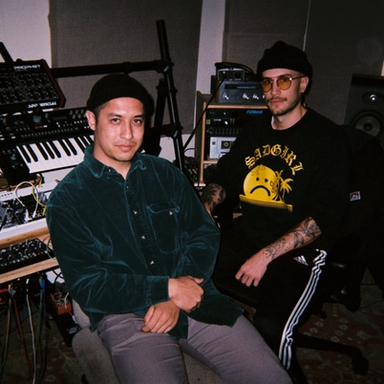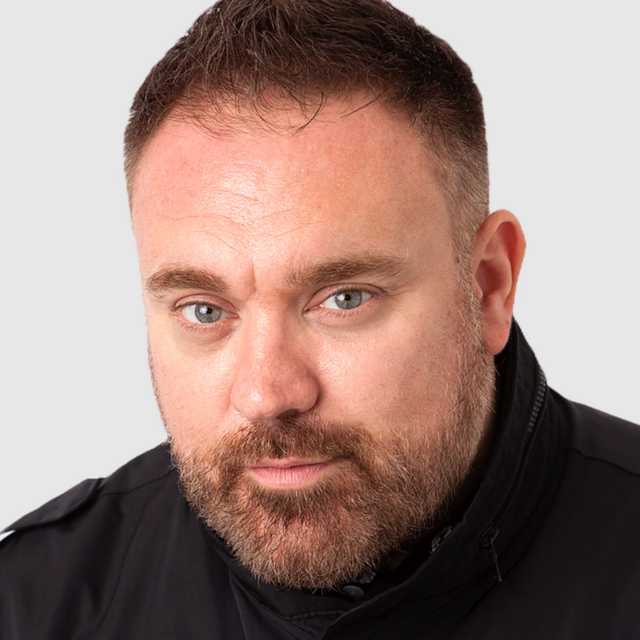Artist Spotlight
Life is better with friends. People by your side with whom you can share wonderful experiences. People who help you discover who you really are. People who guide you on the path to reach your goals. Danny Goliger and James Thomas are two friends on the path of music production with their hardware-driven dance project, DiGJiT. Collaborating for just over a year at the time of writing, Goliger and Thomas built this electronic band on a dynamic of similarity and reciprocity. Both Goliger and Thomas have solo projects. Under his moniker, DJ Health. Thomas has released two EPs on Justin Jay's Fantastic Voyage. In 2021 alone, Goliger released his debut LP, Meaningful Pursuits, also on Fantastic Voyage and his latest EP, Sustain, as a part of Dirtybird's White Label series. Goliger and Thomas share many creative attributes and interests, but their differences allow them to learn from one another and grow as musicians. One of their similar experiences was exposure to music at a young age, but not the kind of exposure they asked for. "[Music] was something I had to do. Something I was being forced to do," says Goliger. Like many kids, Goliger's parents coaxed him into taking classical piano lessons, and as is common with many of those kids, he didn't love it. He didn't love the pieces he was playing or the solitary nature of classical piano. Thomas's father sent him to a piano school when he was very young as well, and it wasn't his favorite experience either. He clearly recalls a memory of plunking through his first recital after watching one of his classmates expertly perform. Despite their initial aversion, these early experiences, however unpleasant, planted the musical seed in both of them. Some years later, they each gravitated towards electronic music. Goliger torrented a copy of the popular production software Logic on Limewire, around the same time he fell in love with playing the drums. Thomas also began fiddling with synthetic sounds. "We had this really bad practice keyboard in my New York City apartment and the piano sounds I hated, but there was one sound with an electric piano with a chorus you could add to it, which is like the closest thing to a synth. I always wanted to play whatever we were playing on that," Thomas says. "That added a little bit of sonic interest to whatever I wasn't connecting with at the time." From there, they each continued their musical pursuits. Goliger studied audio engineering at the University of Southern California Thornton School Of Music. Thomas began DJing, primarily focusing on vinyl. Both of them were producing their own music as well. The two would eventually connect in Los Angeles through mutual friends, and the defining moment was when Goliger saw Thomas DJing at the Downtown Los Angeles hotspot for house and techno, Pattern Bar. "James was throwing it down; a really really good set," Goliger says. "I was like 'Damn this guy is a sick DJ.' I knew pretty quickly that our tastes had a lot of overlap." Their taste in music had a lot of overlap, and their preferred method of production overlapped in a significant way. Both Goliger and Thomas share a fascination with hardware. Drum machines. Samplers. Modular racks. These machines define the DiGJiT sound. Interestingly, while they were both fascinated with hardware, each had very different experience levels with it when they started collaborating. Goliger had been building his setup for years at that point: "I started working for different producers when I was in college," Goliger says. "There were a handful of producers that I worked for that had insane gear collections, and as a young twenty-something I was very envious of the stuff that they had and I was like 'I want to start buying and collecting.' So basically since then I've scraped together all the spare money that I can and put it right into my studio." On the other hand, Thomas had just received his first drum machine as a birthday present right before he and Goliger started working together. Thomas primarily produced in-the-box before acquiring his new apparatus, but when he brought it to Goliger's studio, the two of them jammed for six hours on hardware. "That was the beginning of hanging and jamming," Thomas says, and hanging and jamming became the foundation of DiGJiT. Being able to manifest music in the moment with different synthesizers combined their early instrumental inclinations with their love of hardware, but the experience truly resonated with both of them because it was something they shared as friends. They had (and continue to have) tons of fun when they jam. Furthermore, their varying skill levels with hardware and improvisation allowed them to grow as producers. Thomas was just starting his journey with synthesizers while Goliger already had considerable experience. "It really changed my approach and my workflow," says Thomas of working with Goliger. "I was coming at making music from the computer-beatmaking perspective. I had two synths and now this drum machine at the time, and I was treating them like plugins. I would have an idea, take it to the synth, record it in, and I only had an interface with two inputs at the time. I was super limited in that way. So, coming over here and jamming almost entirely with hardware, really just using the computer to track, totally changed the composition and the compositional style." Beginning to work together in the middle of the pandemic, both Goliger and Thomas had more time than ever for music, and thus they began churning out track after track. Some of their sessions were side-by-side in Los Angeles. Others were remote when Thomas moved to Colorado temporarily, but their production dynamic remained strong. Currently, there are three DiGJiT singles out in the world. All three are very synth-heavy with tight-knit drum patterns. According to Goliger and Thomas, these were some of their earliest works, and now they have many more songs that push the boundaries of dancefloor music even further. Soon their pallet of original tracks started to expand as their sound as a project started to solidify. Coincidentally, this was happening right when live events began to open up, so they took the opportunity to craft a live hardware set based on improvisation. Essentially, they were hanging and jamming with an audience. Both Thomas and Goliger wanted to perform with synthesizers for a long time, and in developing their setup, Thomas's advanced skills as a DJ helped Goliger grow as a performer. "James has a really good top-down understanding of structure and form in dance music. [He has] an ability to see what's happening, bigger picture, and arrange on the fly," Goliger says. "It's real easy when you're improvising to get lost in what you're doing. Being such an experienced DJ has given him a strong sense of arc and contour. In a song. In a set." With that kind of understanding, Thomas naturally took command of the drums during DiGJiT sets. He provides direction while Goliger pushes the limits of his Eurorack and different samplers (watch/listen to the interview for a full technical breakdown of their live performance). After figuring out their different performance roles, the only thing left was having the courage to get on stage, and with their strong friendship, any nervousness evaporated. "I was shitting a brick when we were stepping up to the table the first time to play it live," Thomas laughs. "Having Danny, who's pretty experienced in touring and playing on fairly large festival stages, I really appreciated the calm energy he was bringing to the performance which went really well. "I've played in some friends' bands that have been fairly successful. I've toured a bit, and I've gotten the chance to play on pretty big stages because of them," Goliger says. "Having the support of friends being like 'Holy shit we're about to go on to this huge stage, but at least we're doing it together' is really important for me. It's easier to do it with friends."










